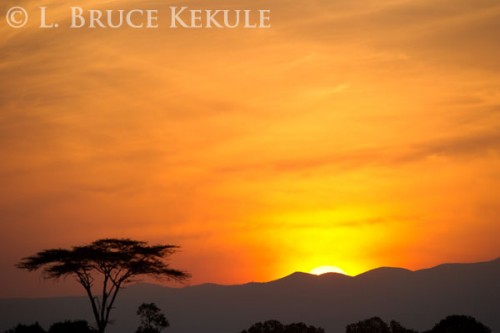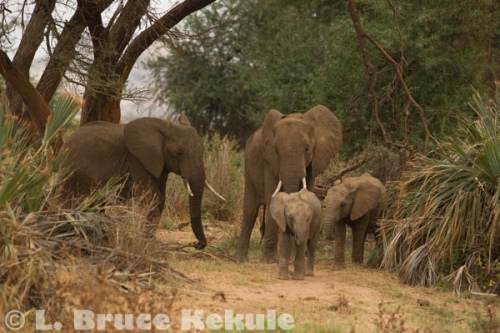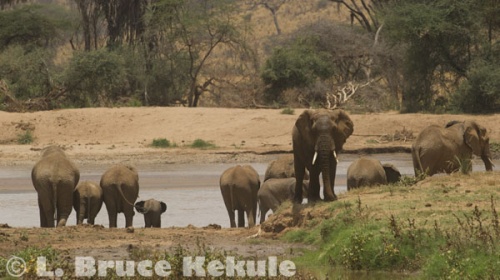The ‘Big Five’ in five days – Part Two
Africa’s great wildlife adventure – continued
Sunrise over Mount Kenya at ‘Sweetwaters’ Wildlife Reserve
The safari so far had been hectic and we had taken loads of photographs. On day seven, our next destination was a private reserve not far from Mount Kenya in the central provinces. The weather was crisp and chilly when we arrived at ‘Sweetwaters Game Reserve’. As we were checking into the lodge, a small herd of reticulated giraffe visited the waterhole next to the hotel. We left our bags and departed for our first game drive and saw more giraffe plus wart hog and zebra.
African fish eagle grabbing a fish – this was a setup where the locals call the eagles in and as they swoop down, the photographer is suppose to catch them in mid-flight. It was not easy and I burned a lot of card space but got one shot. Not easy!
This lodge is a tented camp and the services are amazing. In each bed, a hot water bottle is placed under the covers by the staff in the evening as the temperatures can sometimes drop dramatically during the night close to freezing. Mount Kenya is snow-capped year-round and the weather is always very pleasant here. The mountain is a beautiful sight when the cloud cover clears.
That night at dinner, a small herd of white rhino arrived followed by a family unit of elephant. Just about everyone left their dinner to photograph the huge herbivores. That night, I photographed a male impala that jumped the electric fence to nibble on the soft grass inside the hotel grounds.
Lion pride on the savanna
The next morning, I was up at the crack of dawn setting up my camera with a wide-angle lens to shoot the sunrise with the Mount Kenya range in the background. At 6:30am after a quick cup of coffee, we departed for the morning drive. We bumped into a mother lion and two small cubs. The female had a collar with a radio transmitter and was being monitored by the park’s research staff.
We left after lunch for the last leg of the safari. Our destination was several hundred kilometers to the east and Samburu National Reserve was entirely different from the three previous locations. It was lowland desert; hot, dusty and dry but still loaded with wildlife. The Samburu Game Lodge was very comfortable and located at the banks of the Eweso Nyiro River.
As we entered the park, a herd of giraffe crossed in front of us followed by a large herd of elephant that went down to the river for a refreshing drink and cooling bath. The African giants then sprayed dust over their backs to ward off insects.
Leopard mother and cub in Samburu National Reserve
Over the next two days, we managed to get leopard once again. This time it was a mother and cub feeding on a little male dik-dik, Africa’s smallest antelope. We also photographed Grevy’s zebra, giraffe, waterbuck, gemsbok and gerenuk plus the dik-dik. Elephant were everywhere and easily approached.
When the rains came earlier this year, the river overflowed its banks and washed out the only bridge in the park. We were not able to visit the other side where the lions and buffalo live. There were many crocodiles in this river and two would come up at night into a closed pen next to the bar in the lodge.
On our departure, we saw a large group of vehicles surrounding a tree and decided to investigate. It was on the way out. Up in a tree, a male leopard was sleeping off a previous kill.
African elephant herd in Samburu
It was strange how we bumped into a leopard on the first day and on our day out. The leopard is considered to be the toughest to see and photograph while on safari but we were lucky. The ‘spirits of the wild’ had smiled on us.
The long ride back to Nairobi took about 6 hours and we finally arrived at the hotel tired, dusty and hungry. The next morning we flew to Lamu, a World Heritage Site on the northeast coastline for some rest and sightseeing. This old town was a port during the slave-trading days and its rustic appeal off the beaten track was interesting.
Elephant family group by the Eweso Nyiro River in Samburu
These events are etched in memory and I know I have caught the African bug. I am leaving on another photographic safari to Kenya to catch the ‘Great Migration’ and when I return, will post a new story.
Such is the life of people hooked on photographing anything wild. It is the ultimate hobby or profession, and if you get a camera and start shooting Mother Nature’s creatures, do be prepared; it can be become an addiction.
A note to all who follow my website: I’m leaving for Africa in a few hours and ran out of time to finish this post. When I get back, I will add some additional photos of this amazing safari.







